Publishing books in multiple and indigenous languages in Brazil is important because:
1. Language diversity: Brazil is home to a diverse range of linguistic communities, including indigenous peoples who have their own unique languages and cultures. By publishing books in these languages, the literary and cultural heritage of these communities is preserved and promoted.
2. Cultural preservation: Publishing books in indigenous languages helps to preserve the cultural heritage of indigenous peoples and their traditions, beliefs, and values.
3. Education: By publishing books in indigenous and multiple languages, education becomes more accessible to wider groups of people, allowing them to learn and understand their own culture and history, as well as promoting language education and literacy.
4. Promoting equality: Publishing books in multiple and indigenous languages can help to bridge the gap between different cultural and linguistic communities, promoting equality and understanding among them.
Overall, publishing books in multiple and indigenous languages in Brazil is a way of valuing linguistic and cultural diversity and promoting the preservation of cultural heritage, education and equality.
|
|
Portuguese, Japanese, English and Nheengatu |
|
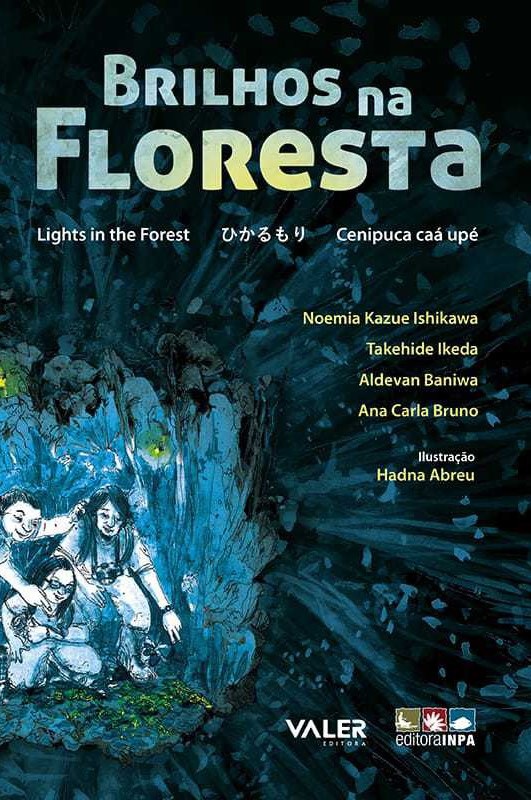 |
This book was published in Portuguese, Japanese, English and Nheengatu. In Brazil, between 160 and 180 languages are spoken, didactic resources in these languages are important for the valorization and maintenance of the language and culture. We hope that this book will contribute to this process for the indigenous peoples. |
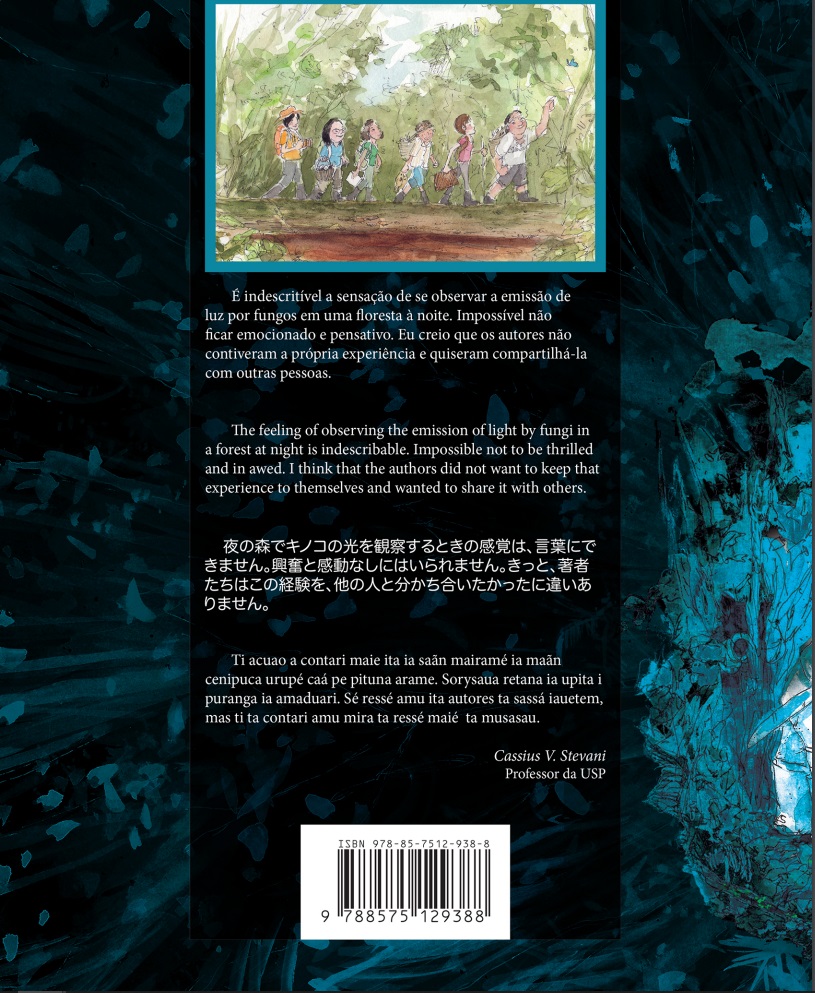 |
|
|
The Tukana language. |
|
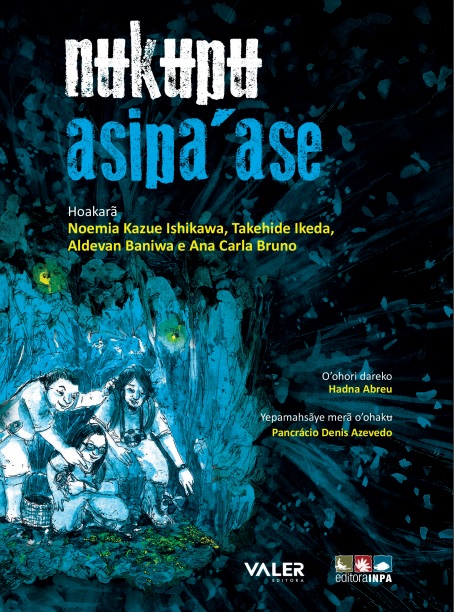 |
This edition of the book "Brilhos na Floresta" was translated from the Portuguese language into the Tukana language. The Tukana language is spoken by about 7000 people mainly in the Alta Rio Negro region. |
 |
|
|
Spanish |
|
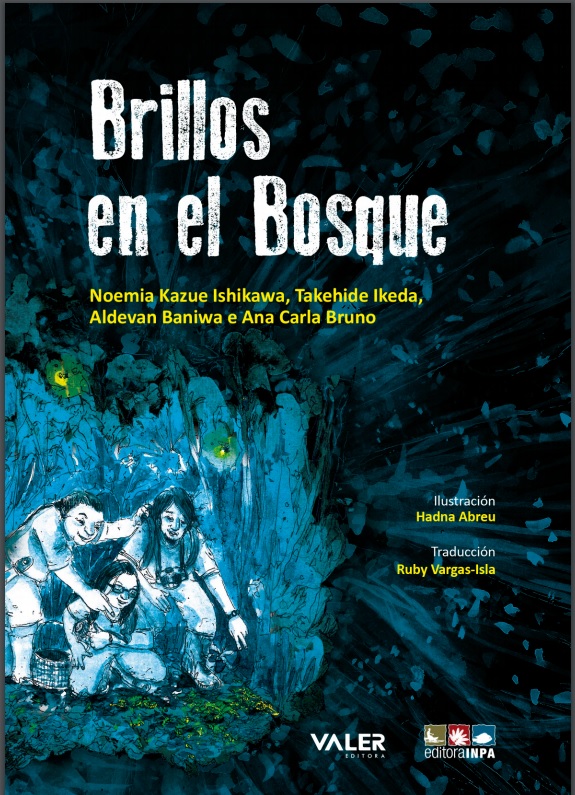 |
Initially this book was published in Portuguese, Japanese, English, and Nheengatu. Then it was published in the Tukano language, because in Brazil between 160 and 180 indigenous languages are spoken and didactic resources are important for the appreciation and maintenance of the language and culture.
The book "Brilhos en el Bosque" reaches the hands of the Spanish-speaking public, one of the largest on the planet. This book contains the record made by researchers, caboclos and indigenous people, observing bioluminescent fungi, for the first time, on the outskirts of the city of Manaus-AM. It carries a motivating message to children, teenagers and young people, who are curious to unravel the secrets of nature, and shows the authors' interest in breaking many of the barriers that still arise regarding the diffusion of knowledge, language being the one them. It is a book that arises in defense of Nature and the Amazon.
|
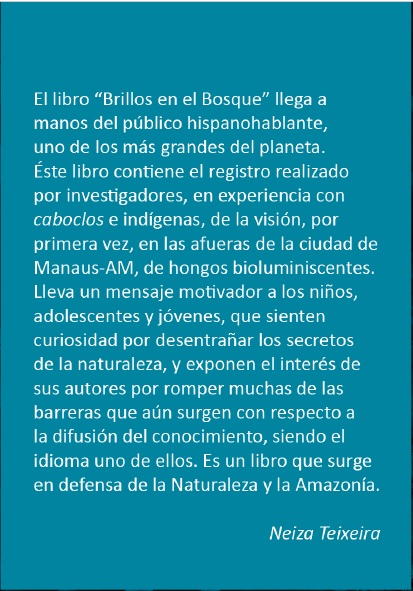 |
|
|
The Huarpe language |
|
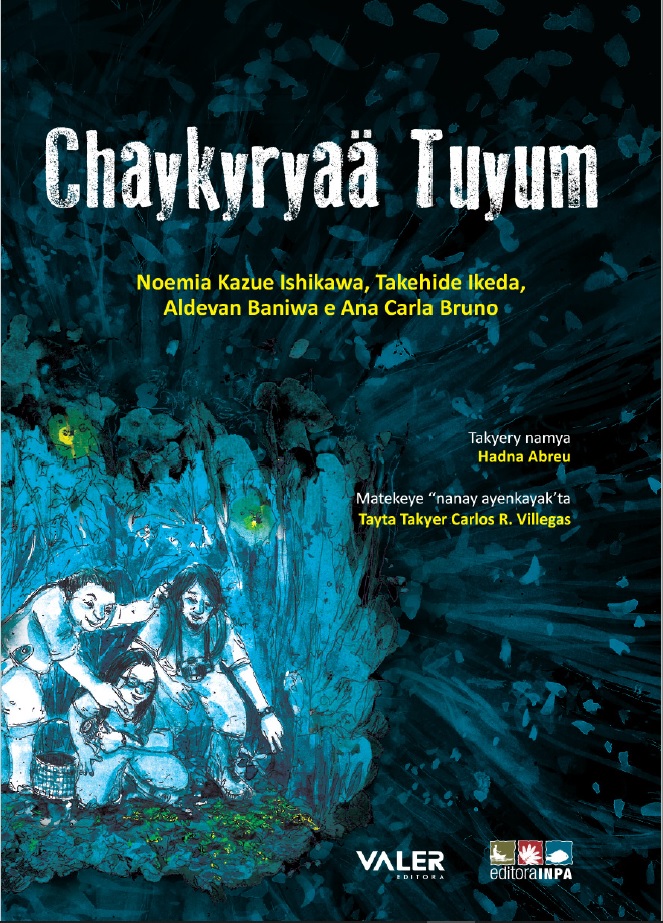 |
The book was translated into the Huarpe language by Carlos Reinaldo Villegas, a youth leader in the Pynkanta Huarpe community in the Province of San Luis, Argentina.
The Huarpe people are currently located in the provinces of San Juan, San Lius and Mendoza in the central east of Argentina. Their language is, at this time, in a state of protection, recovery and updating by the communities of the territory, which advocate for the restitution of rights to indiginous peoples and for the revitalization of their worldview. This language has been registered in three towns: in the northwestern part of the territory, Iliaman Allientiac, in the southwest, Iliamada Milcallac and to the east in Nanay Ayenkayak'ta, where the language is spoken by about 40 people.
|
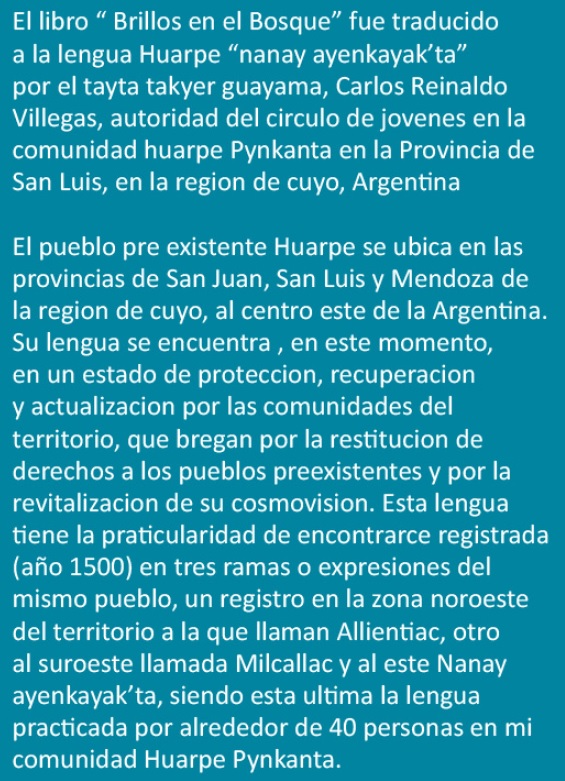 |
|
|
The Baniwa language |
|
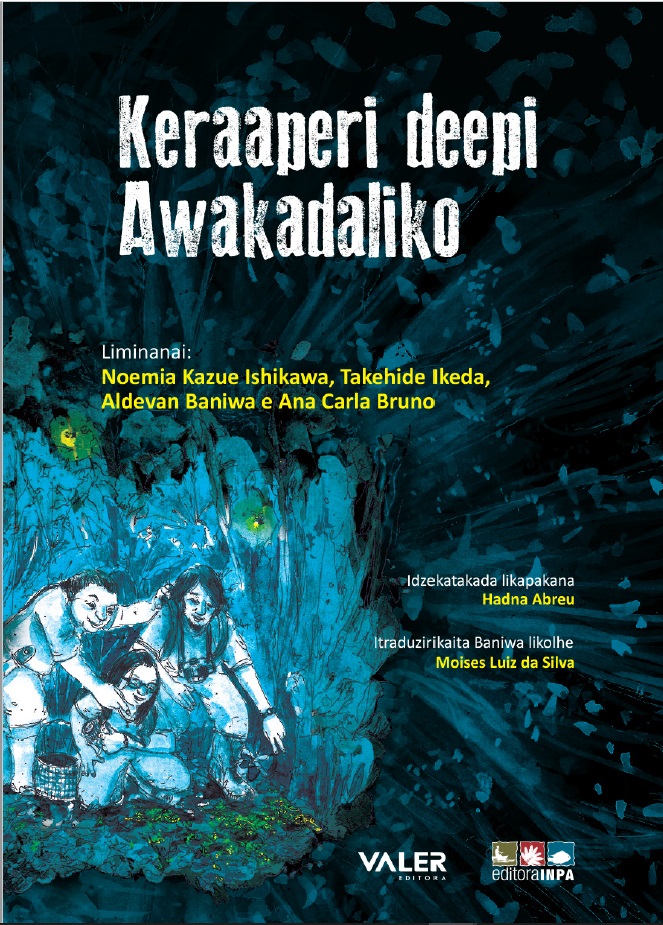 |
This edition of the book "Brilhos na Floresta" was translated from the Portuguese language into the Baniwa language by Moises Luiz da Silva and revised by André Baniwa, both of the Baniwa ethnic group. Moises is from the Hohodeeni clan and lives in the Itacoatiara-Mirim Community, located on the Rio Negro channel and André from the Waliperedakeenai channel, was born in the Tucumã Rupitá Community located on the Rio Içana channel. Both locations are located in the municipality of Saõ Gabriel da Cachoeira in the state of Amazonas. André currently lives in Manaus.
The Baniwa language is spoken by about 7000 people in Brazil. Mostly in the Alto Rio Negro region. It is one of the four co-official languages of São Gabriel da Cachoeira.
|
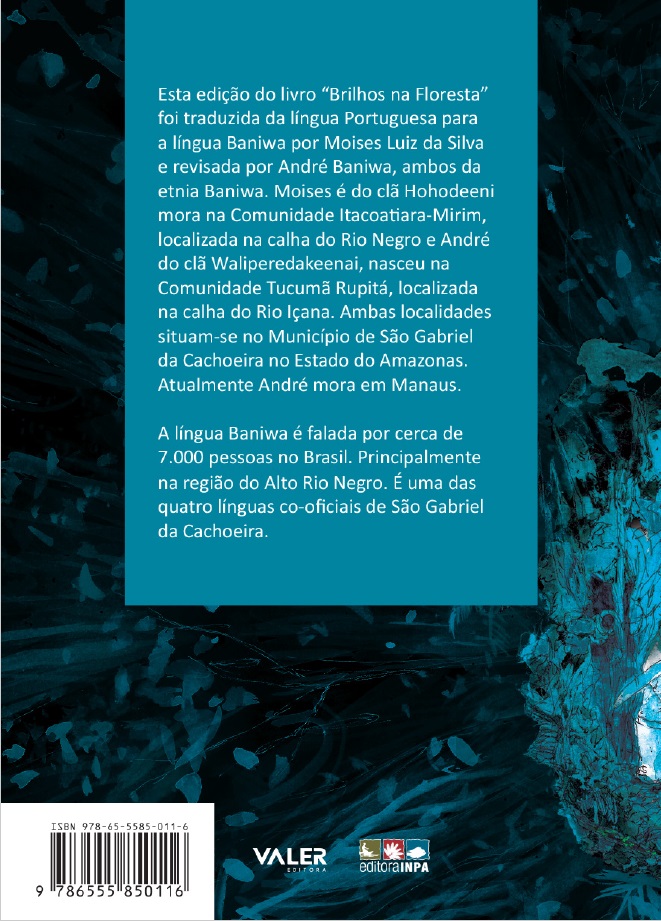 |
|
|
French |
|
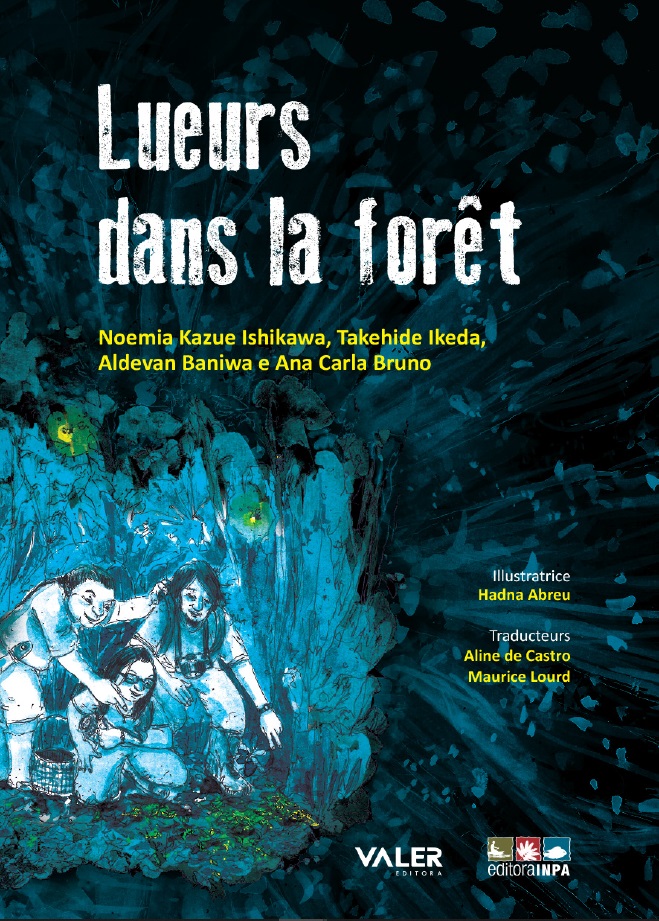 |
After the Portuguese, Nheengatu, Japanese, English, Tukano and Spanish editions of the book Brilhos na Floresta, the French version is now reaching the French-speaking public. This innovative project aims to bring scientific knowledge to a wide audience, both urban dwellers of Western culture, and indigenous inhabitants of the rivers and forests of Brazil, by uniting peoples of different cultures and histories, in accordance with the wishes of the authors. This book is also a tribute to one of its authors - Aldevan Baniwa - victim of the Covid-19 in April 2020. |
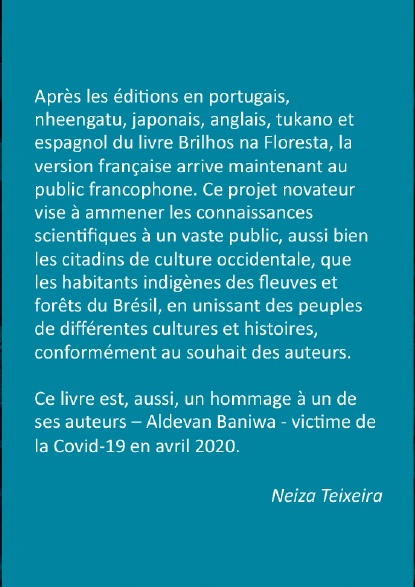 |













